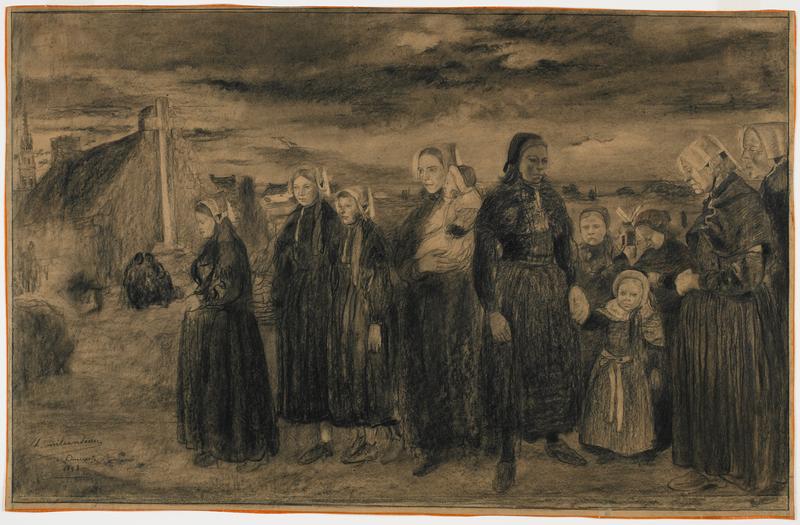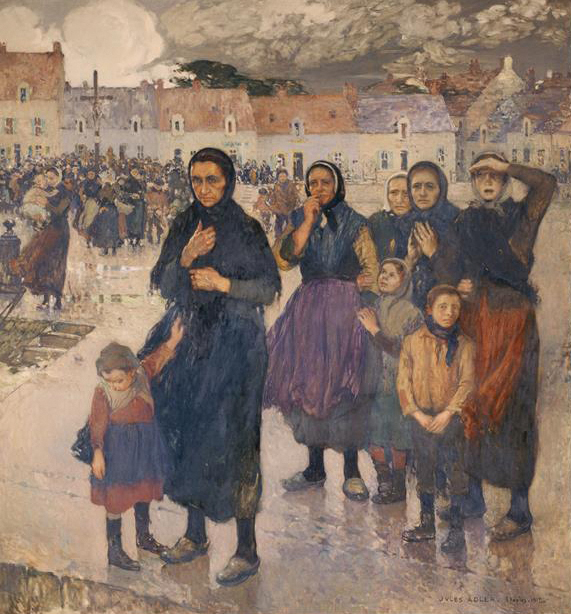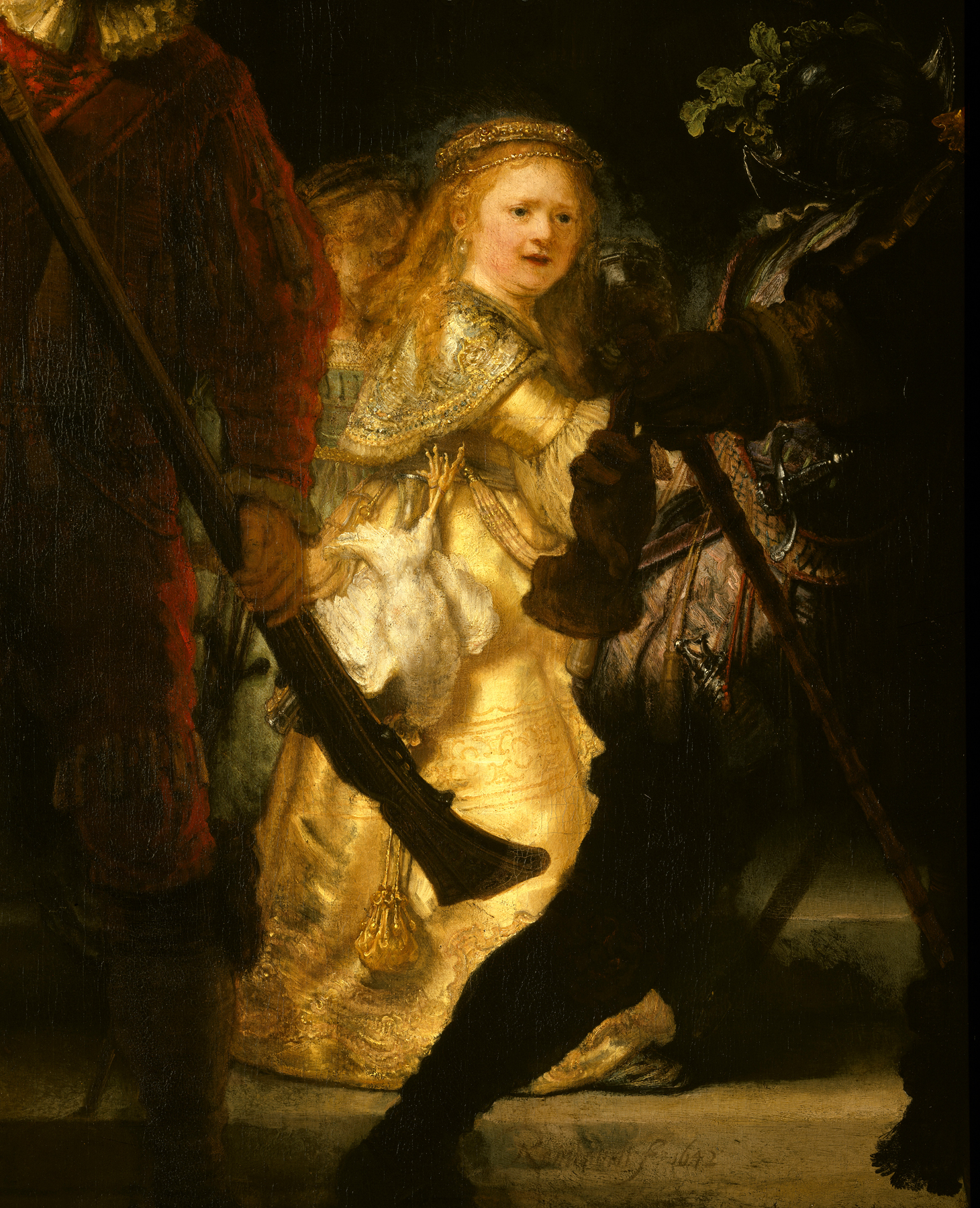
133. Charles Milcendeau, Women and Children at Ouessant
| Artist | Charles Milcendeau, French, Soullans, Vendée 1872–Soullans, Vendée 1919 |
| Title, Date | Women and Children at Ouessant, 1898 |
| Medium | Graphite, black pencil, charcoal, and stumping with red chalk highlights |
| Dimensions | 11 3/4 × 19 in. (29.8 × 48.3 cm) |
| Inscriptions + Marks | Lower left: Ch. Milcendeau / Ouessant / 1898 |
| Provenance | [Chantal Kiener and Christine Bethenod, Paris, until 2004; to Weisberg]; Yvonne and Gabriel Weisberg, Minneapolis |
| Exhibition History | "Expanding the Boundaries: Selected Drawings from the Yvonne and Gabriel P. Weisberg Collection," Mia (2008) and Snite Museum of Art, Notre Dame, Ind. (2010); "Milcendeau, le maître des regards," Historial de la Vendée, Les Lucs-sur-Boulogne, France, 2012; "Reflections on Reality: Drawings and Paintings from the Weisberg Collection," Mia, 2022–23 |
| References | Lisa Dickinson Michaux with Gabriel P. Weisberg, "Expanding the Boundaries: Selected Drawings from the Yvonne and Gabriel P. Weisberg Collection" (exh. cat.), Minneapolis Institute of Arts (Minneapolis, 2008), pp. 22, 64, fig. 37; Christophe Vital, ed., "Charles Milcendeau 1872–1919: Sa vie, son oeuvre" (Milan: Silvana Editoriale, 2012), pp. 158, 292, no. 75, ill. |
| Credit Line | Promised gift of Gabriel P. and Yvonne M.L. Weisberg, Minneapolis |
Brittany, a French region north of the Vendée, became an important source of subjects for Charles Milcendeau. He visited the area in 1896, 1897, and 1898, and perhaps other times, too. A letter he sent from his hometown of Soullans to his one-time teacher Gustave Moreau, dated October 18, 1897, mentions a “lovely collection of drawings”1 that he brought back after a month-and-a-half visit to the province. Ouessant, where he made this drawing, is an island off the area’s western tip.2 At the time Milcendeau was there, about 2,300 people lived on the island. For many, their livelihoods depended on what they pulled from the sea.

In this drawing, Milcendeau conveyed the community’s fears as women and children await the return of the fishing boats. As the sky foretells, the fishermen’s lives are threatened by an approaching storm. Anxiety is visible on several of the villagers’ faces. Some on the beach wring their hands. Fifteen years after Milcendeau completed this scene, Jules Adler (cat. nos. 1–4) painted Heavy Weather off the Coast (fig. 1), which carries echoes of Milcendeau’s work. Whether Adler knew Milcendeau has yet to be established with certainty, but Milcendeau’s works could have been seen in several exhibitions during the late 1800s and early 1900s.
Characteristic of Milcendeau’s meticulous handling, each woman is expressively drawn. The young girl in the right foreground brings to mind a figure from the Rembrandt painting known as “The Night Watch” (fig. 2), which influenced artist Gustave Courbet as well. It seems that for his larger compositions, Milcendeau occasionally turned to the old masters for guidance.

The Weisberg composition, one of the artist’s most complex, reminds us how precarious life was for many of Ouessant’s families. Whether Milcendeau intended the drawing as an independent finished work or as the basis for a large painting remains unknown. Regardless, Women and Children at Ouessant reveals his sensitivity to the lives of these isolated villagers.
GPW
Notes
Christophe Vital, “La Bretagne voisine, de spectaculaires progress,” in Charles Milcendeau: Sa vie son oeuvre, 1872–1919, ed. Christophe Vital (Milan: Silvana Editoriale, 2012), pp. 157-65. Vital writes that there is real progress or changes in the artist’s style in the works done in Brittany. The compositions become more intricate and include more characters. The artist essentially moved from line drawings to a more pictorial approach, using more color. ↩︎
The island is also known as Ushant. ↩︎